#Whitefly Pest Control
Text
Whitefly Pest Control
Affected leaves show patches and mottling that can be mistaken for fungal or viral infections. Whitefly infestations can cause leaves to prematurely dry up or fall off. Whitefly eggs under egg plant leaf. Discoloured patches can remain on the leaves long after the whiteflies are cleared.
About whitefly
Whiteflies are a common pest we struggled to manage when we started our urban food forest.…

View On WordPress
0 notes
Text
Lemon
Lemon

Lemon is a citrus fruit with a sour taste. India is the largest producer of lemons in the world. The scientific name of plant is citrus lemon. Citrus is native to Asia. A lemon tree is a small tree or dense shrubby plant. Citrus fruits are mostly found in tropical regions.
Varieties

There are different varieties of lemon grown worldwide. Popular varieties such as Meyer, primofori, Verna, bearss lemons and baboon lemons.
Meyer lemon

Meyer citrus fruits is a hybrid variety crossed between lemon and mandarin orange. This lemon tree is dwarf species with a quick fruit-producing variety. It has smooth golden skin and grows at a height of 6-10 feet.
Primofiori lemon

These citrus fruits have a soft peel with a good amount of juice. It bears a medium to small, yellow colour. Large and hardy lemon tree. Grows up to 19 feet. The plant gives citrus fruits for 20-30 years.
Verna lemon
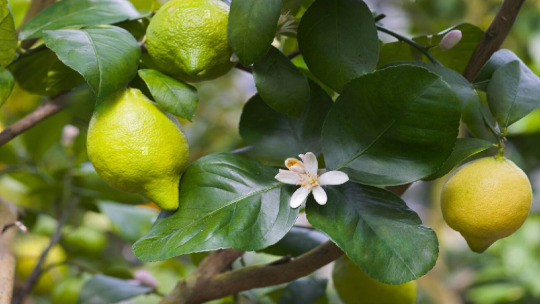
Verna citrus is almost related to the eureka variety. It contains fewer seeds and a high amount of juice. This lemon tree is a vigorous nature plant with good productivity. Verna is a self-compatible species.
Bearss lemon

Bearss variety is one of the most popular varieties. Citrus plants have a thornless branch. It has a high quantity of juice content. Fruits are round to oval shape.
Baboon lemon
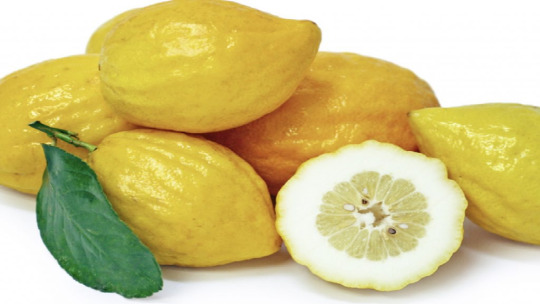
Baboon citrus has bright yellow skin, a slow-growing compact plant and a thick rind. Citrus fruits are knobby and highly acidic.
Soil
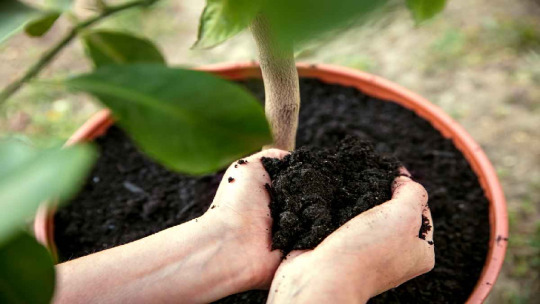
This plants prefers grow in all types of soil. A simple potting mix should include 40 per cent coco-peat moss with 20 per cent compost like decomposed cow dung or vermicompost.
Watering
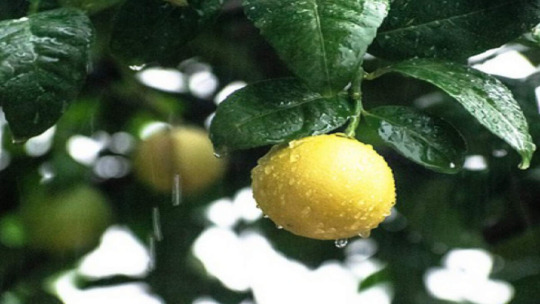
The watering frequency of course depends on the zone. Water it deeply and thoroughly so that the entire root system is drenched with water and water comes out of the drainage holes. Overwatering can result in root rot and death of the plant.
Sunlight

Growing citrus plants on the balcony or on the terrace, location is very important because these trees need full direct sunlight of at least 6 hours for the best result.
Fertilizer
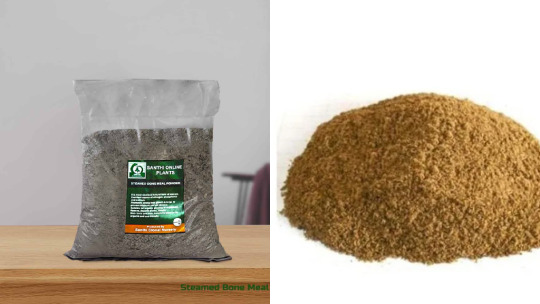
During the time of fruiting add one handful of steamed bone meal powder which is very inexpensive. Add banana peel fertilizer once in 15 days to supplement good potassium.
Pests and diseases

Improper care can cause pests like aphids, mealy bugs and whiteflies. Citrus canker is a major disease.
Control
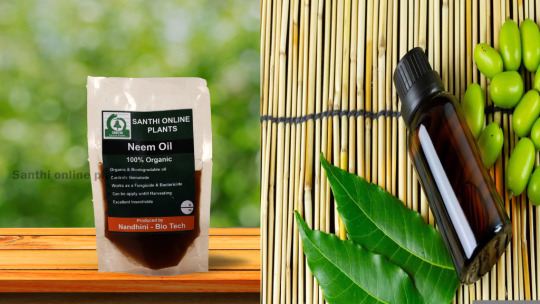
Best in prevention by spraying neem oil once in 15 days (5-10ml neem oil in one litre of water)
Repotting
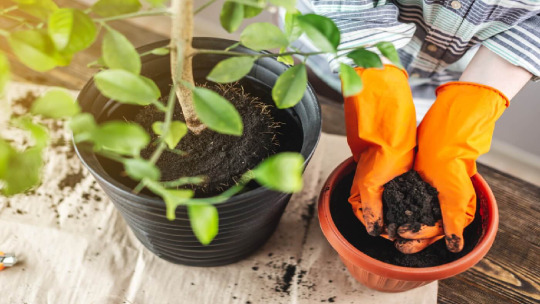
To maintain a healthy plant, citrus trees can be repotted once a year.
Pruning
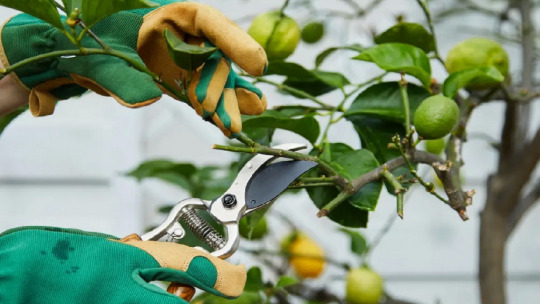
To prune damaged and dried leaves to promote vegetative growth. Trees pruned prior to blooming.
Benefits
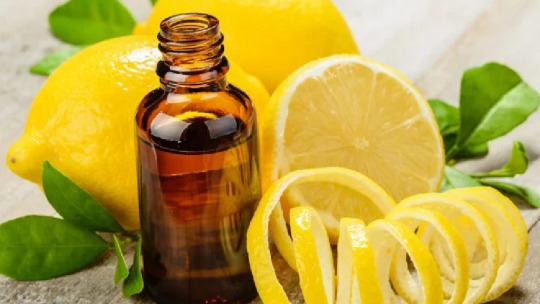
This plant helps in weight loss, and reduce the risk of heart, kidney stones and digestive issue.
This fruits are used in foods and cleaning products.
Helps clear skin and boost immunity.
Beneficial for throat infection.
It has a good source of vitamin C.
"Love the planet green to spend a happy life"
Lemon eco-friendly plant
Blog compiled by Santhionlineplants
#Baboon lemon#baboon lemon#Baboon citrus has bright yellow skin#Soil#soil for citrus plant#Watering#watering#Sunlight#sunlight requirement for citrus#Growing citrus plants on the balcony or on the terrace#location is very important because these trees need full direct sunlight of at least 6 hours for the best result.#Fertilizer#fertilizer#Pests and diseases#pests and diseases in citrus#Improper care can cause pests like aphids#mealy bugs and whiteflies. Citrus canker is a major disease.#Control#neem oil#Best in prevention by spraying neem oil once in 15 days (5-10ml neem oil in one litre of water)#Repotting#repotting citrus plant#To maintain a healthy plant#citrus trees can be repotted once a year.#Pruning#pruning of lemon tree#Benefits#benefits for citrus fruits#This plant helps in weight loss#and reduce the risk of heart
0 notes
Text
Lemon
Lemon

Lemon is a citrus fruit with a sour taste. India is the largest producer of lemons in the world. The scientific name of plant is citrus lemon. Citrus is native to Asia. A lemon tree is a small tree or dense shrubby plant. Citrus fruits are mostly found in tropical regions.
Varieties

There are different varieties of lemon grown worldwide. Popular varieties such as Meyer, primofori, Verna, bearss lemons and baboon lemons.
Meyer lemon

Meyer citrus fruits is a hybrid variety crossed between lemon and mandarin orange. This lemon tree is dwarf species with a quick fruit-producing variety. It has smooth golden skin and grows at a height of 6-10 feet.
Primofiori lemon

These citrus fruits have a soft peel with a good amount of juice. It bears a medium to small, yellow colour. Large and hardy lemon tree. Grows up to 19 feet. The plant gives citrus fruits for 20-30 years.
Verna lemon

Verna citrus is almost related to the eureka variety. It contains fewer seeds and a high amount of juice. This lemon tree is a vigorous nature plant with good productivity. Verna is a self-compatible species.
Bearss lemon
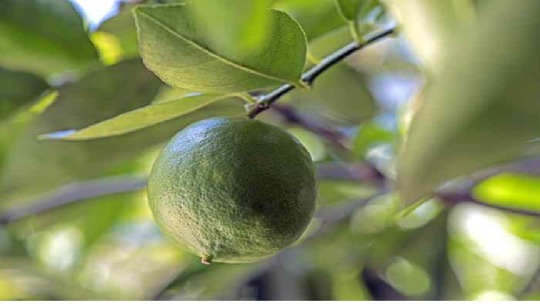
Bearss variety is one of the most popular varieties. Citrus plants have a thornless branch. It has a high quantity of juice content. Fruits are round to oval shape.
Baboon lemon

Baboon citrus has bright yellow skin, a slow-growing compact plant and a thick rind. Citrus fruits are knobby and highly acidic.
Soil

This plants prefers grow in all types of soil. A simple potting mix should include 40 per cent coco-peat moss with 20 per cent compost like decomposed cow dung or vermicompost.
Watering
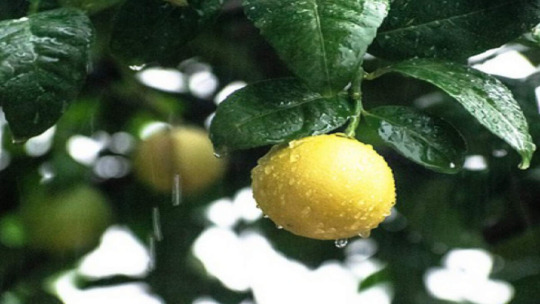
The watering frequency of course depends on the zone. Water it deeply and thoroughly so that the entire root system is drenched with water and water comes out of the drainage holes. Overwatering can result in root rot and death of the plant.
Sunlight

Growing citrus plants on the balcony or on the terrace, location is very important because these trees need full direct sunlight of at least 6 hours for the best result.
Fertilizer

During the time of fruiting add one handful of steamed bone meal powder which is very inexpensive. Add banana peel fertilizer once in 15 days to supplement good potassium.
Pests and diseases
Improper care can cause pests like aphids, mealy bugs and whiteflies. Citrus canker is a major disease.

Control
Best in prevention by spraying neem oil once in 15 days (5-10ml neem oil in one litre of water)
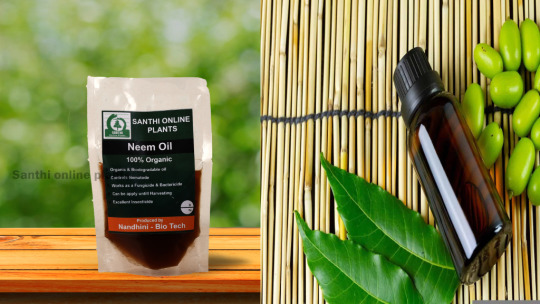
Repotting

To maintain a healthy plant, citrus trees can be repotted once a year.
Pruning
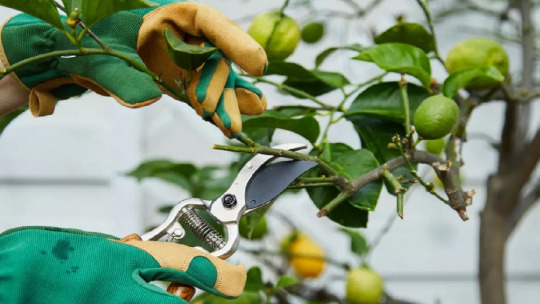
To prune damaged and dried leaves to promote vegetative growth. Trees pruned prior to blooming.
Benefits
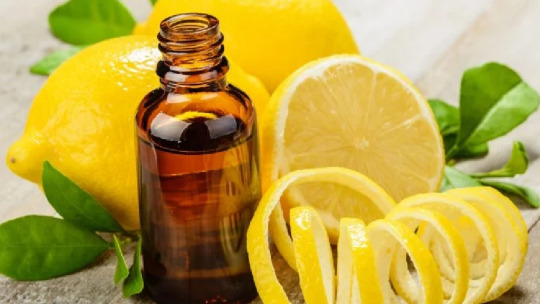
This plant helps in weight loss, and reduce the risk of heart, kidney stones and digestive issue.
This fruits are used in foods and cleaning products.
Helps clear skin and boost immunity.
Beneficial for throat infection.
It has a good source of vitamin C.
"Love the planet green to spend a happy life"
Lemon eco-friendly plant
Blog compiled by Santhionlineplants
#Watering#watering#Sunlight#sunlight requirement for citrus#Growing citrus plants on the balcony or on the terrace#Fertilizer#fertilizer#Pests and diseases#pests and diseases in citrus#Improper care can cause pests like aphids#mealy bugs and whiteflies. Citrus canker is a major disease.#Control#neem oil#Best in prevention by spraying neem oil once in 15 days (5-10ml neem oil in one litre of water)#Repotting#repotting citrus plant#To maintain a healthy plant#citrus trees can be repotted once a year.#Pruning#pruning of lemon tree#Benefits#benefits for citrus fruits#This plant helps in weight loss#and reduce the risk of heart#kidney stones and digestive issue.#This fruits are used in foods and cleaning products.#Helps clear skin and boost immunity.#Beneficial for throat infection.#It has a good source of vitamin C.#“Love the planet green to spend a happy life”
0 notes
Text
Lemon
Lemon
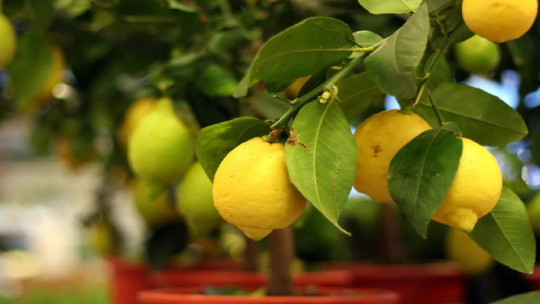
Lemon is a citrus fruit with a sour taste. India is the largest producer of lemons in the world. The scientific name of plant is citrus lemon. Citrus is native to Asia. A lemon tree is a small tree or dense shrubby plant. Citrus fruits are mostly found in tropical regions.
Varieties

There are different varieties of lemon grown worldwide. Popular varieties such as Meyer, primofori, Verna, bearss lemons and baboon lemons.
Meyer lemon
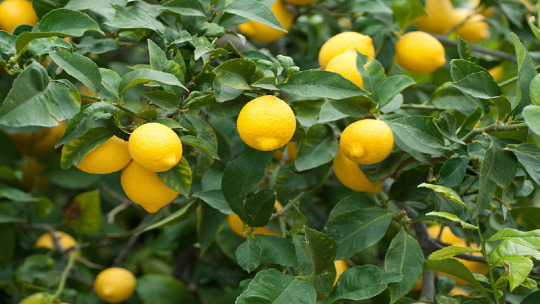
Meyer citrus fruits is a hybrid variety crossed between lemon and mandarin orange. This lemon tree is dwarf species with a quick fruit-producing variety. It has smooth golden skin and grows at a height of 6-10 feet.
Primofiori lemon

These citrus fruits have a soft peel with a good amount of juice. It bears a medium to small, yellow colour. Large and hardy lemon tree. Grows up to 19 feet. The plant gives citrus fruits for 20-30 years.
Verna lemon
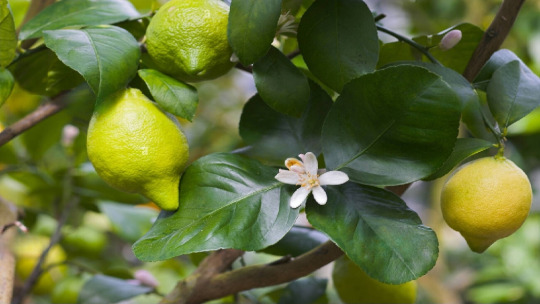
Verna citrus is almost related to the eureka variety. It contains fewer seeds and a high amount of juice. This lemon tree is a vigorous nature plant with good productivity. Verna is a self-compatible species.
Bearss lemon
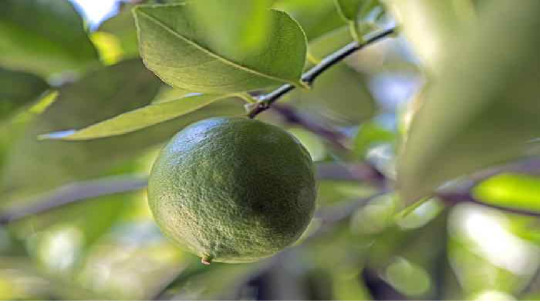
Bearss variety is one of the most popular varieties. Citrus plants have a thornless branch. It has a high quantity of juice content. Fruits are round to oval shape.
Baboon lemon

Baboon citrus has bright yellow skin, a slow-growing compact plant and a thick rind. Citrus fruits are knobby and highly acidic.
Soil

This plants prefers grow in all types of soil. A simple potting mix should include 40 per cent coco-peat moss with 20 per cent compost like decomposed cow dung or vermicompost.
Watering
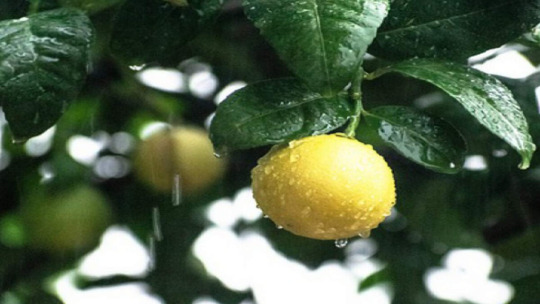
The watering frequency of course depends on the zone. Water it deeply and thoroughly so that the entire root system is drenched with water and water comes out of the drainage holes. Overwatering can result in root rot and death of the plant.
Sunlight
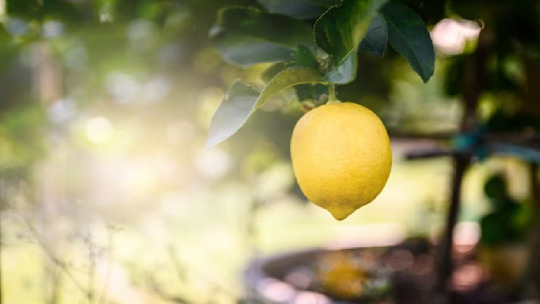
Growing citrus plants on the balcony or on the terrace, location is very important because these trees need full direct sunlight of at least 6 hours for the best result.
Fertilizer
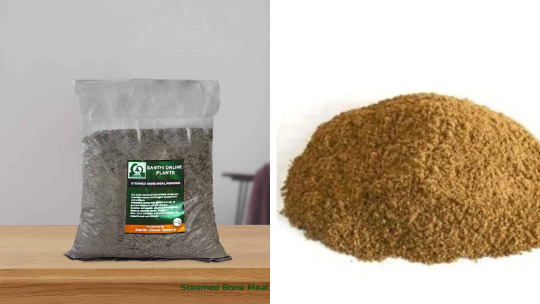
During the time of fruiting add one handful of steamed bone meal powder which is very inexpensive. Add banana peel fertilizer once in 15 days to supplement good potassium.
Pests and diseases
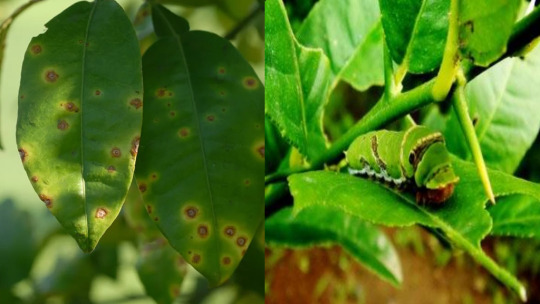
Improper care can cause pests like aphids, mealy bugs and whiteflies. Citrus canker is a major disease.
Control
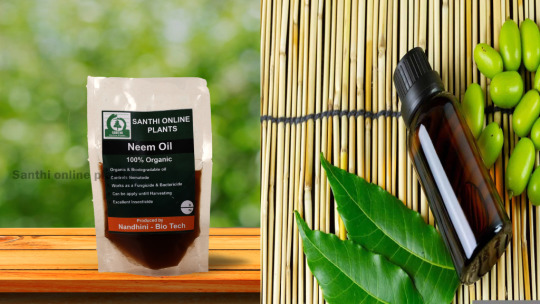
Best in prevention by spraying neem oil once in 15 days (5-10ml neem oil in one litre of water)
Repotting

To maintain a healthy plant, citrus trees can be repotted once a year.
Pruning
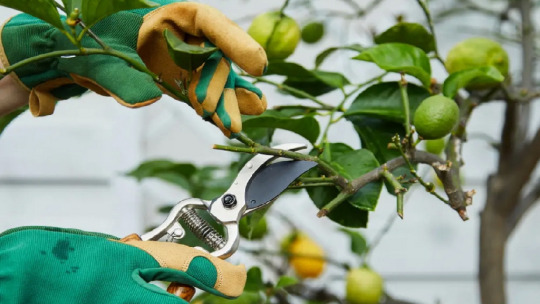
To prune damaged and dried leaves to promote vegetative growth. Trees pruned prior to blooming.
Benefits

This plant helps in weight loss, and reduce the risk of heart, kidney stones and digestive issue.
This fruits are used in foods and cleaning products.
Helps clear skin and boost immunity.
Beneficial for throat infection.
It has a good source of vitamin C.
"Love the planet green to spend a happy life"
Lemon eco-friendly plant
Blog compiled by Santhionlineplants
#Fertilizer#fertilizer#Pests and diseases#pests and diseases in citrus#Improper care can cause pests like aphids#mealy bugs and whiteflies. Citrus canker is a major disease.#Control#neem oil#Best in prevention by spraying neem oil once in 15 days (5-10ml neem oil in one litre of water)#Repotting#repotting citrus plant#To maintain a healthy plant#citrus trees can be repotted once a year.#Pruning#pruning of lemon tree#Benefits#benefits for citrus fruits#This plant helps in weight loss#and reduce the risk of heart#kidney stones and digestive issue.#This fruits are used in foods and cleaning products.#Helps clear skin and boost immunity.#Beneficial for throat infection.#It has a good source of vitamin C.#Lemon eco-friendly plant#Blog compiled by Santhionlineplants
0 notes
Text
Pest Management
•Sucking pests
Aphids
Scale
Mealybugs
Whitefly
Spider mites
•Chewing pests
Cabbage white butterfly
Tent caterpillars
Leaf beetle
Flea beetle
Tomato Horn Worm
Root borers
•Boring pests
Squash Vine Borer
•Human pests
Really good fences/barriers
Build solid neighborly relationships
Plant an extra biodiverse row for the “guests”
Pests have a sense of smell and peppermints, thymes and wormwoods are excellent players in keeping pests at bay.
Wormwood is the champion!
Basils and Dill deter the tomato horn worm.
Put in some trap crops or let a few of the trap crops grow. Poke weed, old mustards, cleome etc..
Plants, especially herbs, have essential oil’s which decimate viral infections, eliminate fungal and bacterial issues in humans as well as other plants. Rosemary and fennel can be dried and sprinkled to prevent slugs and snails.
Lavender, Oregano and Rosemary are particularly high in antibacterial and anti-fungal properties and act as strong remedies and preventives.
Tools and items to remove or treat the offending pests:
Dipel (Bt)
Dr Bronners peppermint soap in a 16oz. spray bottle. 3 teaspoons of soap per bottle and the rest water.
Spinosad
(Permethrin is synthetic and modeled after chrysanthemums which have insecticidal properties)
Neem oil
Diatomaceous earth
(DE)
Hand removing
Beneficial predators are:
Wasps
Lizards
Snakes
Spiders
Hornets
Ladybugs
Dragon flies
The program will provide an overview and what to do about the 4 basic pests in the garden or on the farm: sucking pests, chewing pests, boring pests, and human pests. Join farmer, trainer, soil alchemist, and worm whisperer Maurice Small as he digs deep on pest control and integrated pest management.
Helpful links:
http://www.groundworkatlanta.org/food

https://www.treesatlanta.org/

#pest control#pest management#integrated pest management#groundwork atlanta#trees atlanta#organic pest control#aglanta#atlanta urban ag#browns mill food forest#atlanta grown#atlanta#maurice small
33 notes
·
View notes
Text
Pest And Disease Control
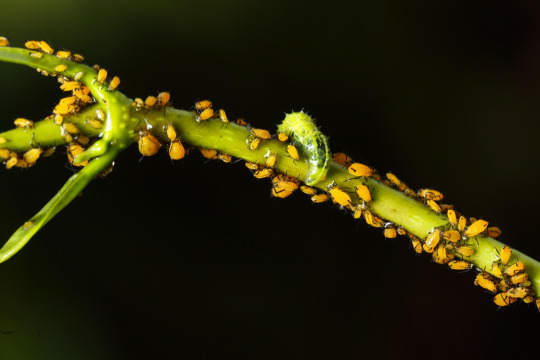
Unhealthy seedlings are often targeted by pests like whiteflies, aphids, and mites. Applying insecticidal soap can help control these pests. Identifying and addressing stress factors is crucial for promoting healthy growth.
Seedlings can also be affected by damping-off, a fungal disease. To prevent it, use sterile soil mix, and water in the morning, and ensure proper ventilation.
#pestcontrol#pestcontrolservice#pest#pestmanagement#bedbugs#bugs#insects#pests#pestcontrollife#pestfree#gardening#gardeningcare#gardencare#yardener#gardeningtips#gardening tumblr#gardeninspiration#gardeningcommunity#gardener
1 note
·
View note
Note
Also!!!! wasps or bees........ O_0
might come as a surprise but wasps are my bias. always have been. i think they're extremely misunderstood and unfairly treated by humans like many other insects we're afraid of.

here's a common wasp (vespula vulgaris) i found in the factory the other week. that little FACE!!!! i picked them up in one hand and they just stayed there since they were so cold. as soon as they warmed up in the office they were ready to freaking fight and that's okay.
ok.
modern day bees evolved from ancient predatory wasps that lived about 120 million years ago. fossil evidence is sparse, but bees probably started appearing around the same time as flowering plants during the cretaceous period (146 to 74 million years ago). if we didn't have wasps, we wouldn't have today's bees.
wasps are essential to many ecosystems. take the fig wasp for example. almost every species of tropical fig tree has its own specific fig wasp that has co-evolved alongside it, pollinating it and keeping it well-distributed. solitary wasps are also valuable in biological pest control as they control whiteflies and aphids. without the help of wasps (and spiders!) we would likely be overrun by these tiny pests that attack important crops.
although bees are known to be intelligent, wasps aren't given enough credit for their own mental acuity. for starters, they are capable of transitive inference and have sharp social memory. they remember where their nests are, can recognize the faces of conspecifics, and may be able to recognize human faces. they also utilize complex communication between themselves. for example, some wasps will drum to alert each other of danger or food. when injured, wasps release pheromones to warn others that a predator is nearby. this signals to other wasps that the nest may be under attack, and it's why people sometimes end up with an entire swarm of wasps coming for them after harming just one wasp.
plus, there's just so many unique species. take these for example:

source look at that pose. the poise. the colours. hoogh. pointy.
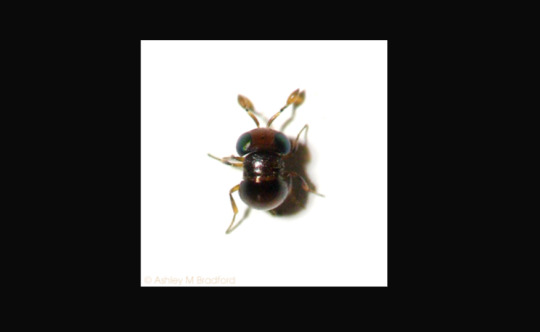
source (yes, this is a wasp too!) just a little guy!!!

source check out the blue on this guy. stunning. beautiful. amazing.
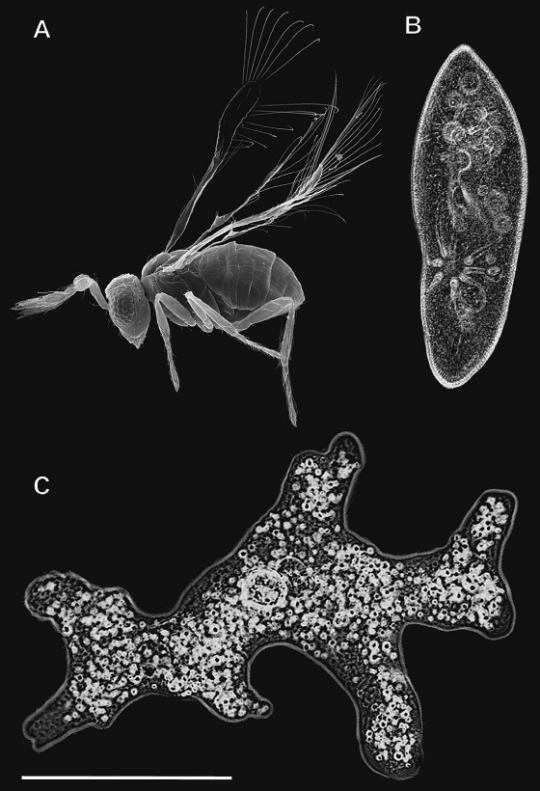
SOURCE. oHg you thought this was just some fly? wrong. this is a fairyfly, aka yet another wasp. it's the smallest insect currently known and that's the little guy pictured next to an AMOEBA. interestingly, most of the fairyfly's cells lack a nucleus - they sacrifice nuclei in order to stay so tiny. this may be part of why they only live for 5 days as adults.
so yeah wasps are pretty cool and neat i guess *vibrating a little* o__o
2 notes
·
View notes
Text
Thiamethoxam 30% FS | Peptech Bioscience Ltd | Manufacturer And Exporter
Thiamethoxam 30% FS stands out as a potent, broad-spectrum systemic insecticide within the neonicotinoid family. Its neurotoxic properties specifically target insects' nervous systems, disrupting normal nerve cell function. Widely utilized in agriculture, it effectively controls various pests like aphids, whiteflies, thrips, and leafhoppers. What sets it apart is its systemic action, enabling it to be absorbed by plants and distributed throughout their tissues, offering prolonged protection. This unique attribute not only enhances its efficacy but also minimizes environmental impact by reducing the need for repeated applications. Thus, Thiamethoxam 30% FS stands as a versatile and eco-friendly solution in pest management.

0 notes
Text
Heatproof Your Garden: Summer Gardening Tips for Jaipur's Climate
Introduction:
Welcome to the scorching yet vibrant world of summer gardening in Jaipur! As temperatures rise, so do the challenges of maintaining a thriving garden. However, with the right strategies and techniques, you can heatproof your garden and ensure your plants not only survive but also flourish during the hot months. In this comprehensive guide, we'll explore a range of summer gardening tips tailored specifically to Jaipur's unique climate, helping you create a resilient and beautiful garden oasis.

Understanding Jaipur's Summer Climate:
Jaipur experiences extremely hot and dry summers, with temperatures often soaring above 40°C (104°F). The combination of intense sunlight and low humidity levels can stress plants, leading to wilting, sunburn, and reduced growth. Understanding these climatic conditions is crucial in implementing effective gardening strategies.
1. Choose Heat-Tolerant Plants:
Selecting plants that can withstand Jaipur's summer heat is the first step in heatproofing your garden. Opt for native or drought-tolerant species such as bougainvillea, cacti, succulents, agave, and oleander. These plants have adapted to thrive in arid conditions and require less water once established.
2. Mulch for Moisture Retention:
Mulching is a key technique to conserve soil moisture and regulate soil temperature during hot weather. Apply a layer of organic mulch such as dried leaves, straw, or wood chips around plants to reduce evaporation and keep roots cool. Mulch also suppresses weed growth, saving water and nutrients for your plants.
3. Efficient Watering Practices:
Watering efficiently is crucial in hot climates to prevent water wastage and ensure plants receive adequate moisture. Water deeply and less frequently to encourage deep root growth and drought tolerance. Use drip irrigation or soaker hoses to deliver water directly to the root zone, minimizing evaporation and runoff.
4. Provide Shade and Shelter: Protect sensitive plants from direct sunlight and heat stress by providing shade and shelter. Install shade cloth, umbrellas, or use natural shade from trees or tall plants to create cooler microclimates in your garden. Consider placing potted plants strategically to avoid intense sun exposure during peak hours.
5. Time Your Gardening Activities:
Schedule gardening tasks such as watering, pruning, and planting during cooler times of the day, preferably early morning or late afternoon. Avoid working in the garden during the hottest hours to minimize stress on both plants and yourself.
6. Soil Management and Nutrition:
Healthy soil is essential for plant resilience during hot weather. Amend your soil with organic matter like compost to improve water retention, soil structure, and nutrient availability. Use slow-release fertilizers to provide essential nutrients gradually, promoting steady growth without excessive flushes that can stress plants.
7. Monitor and Protect Against Pests:
Summer heat can exacerbate pest infestations, so regularly inspect plants for signs of pests such as aphids, spider mites, and whiteflies. Use organic pest control methods like neem oil spray or introduce beneficial insects like ladybugs to maintain a natural balance.
Conclusion:
In conclusion, navigating summer gardening in Jaipur's climate requires proactive measures to heatproof your garden and ensure plant health and vitality. By choosing heat-tolerant plants, practicing efficient watering techniques, providing shade, and maintaining soil health, you can create a resilient and beautiful garden oasis even in the hottest months. Implement these summer gardening tips and enjoy a flourishing garden that thrives despite the heat, adding joy and beauty to your outdoor space. Happy gardening!
0 notes
Text
How to get rid of bugs on indoor plants
Introduction: Maintaining how to get rid of bugs on indoor plants offers numerous benefits, from purifying air to enhancing aesthetics. However, dealing with pesky bugs can turn your green oasis into a battleground. Fear not! With strategic techniques, you can reclaim your indoor garden and foster flourishing foliage.
Identifying the Culprits: Before devising a plan of attack, pinpoint the specific pests plaguing your plants. Common indoor intruders include aphids, spider mites, mealybugs, fungus gnats, and whiteflies. Each pest requires a tailored approach for effective eradication.
Strategies for Success: Harnessing natural solutions is both eco-friendly and effective in controlling indoor plant pests. Here are proven methods to combat bug infestations:
Neem Oil: Extracted from the neem tree, neem oil serves as a potent insecticide and disrupts pests' life cycles. Dilute neem oil in water and apply it to affected plants, focusing on the undersides of leaves where insects often lurk.
Insecticidal Soap: Gentle yet deadly to bugs, insecticidal soap suffocates pests on contact. Mix a solution following product instructions and spray it on how to get rid of bugs on indoor plants, ensuring thorough coverage. Repeat applications every few days until the infestation subsides.
Diatomaceous Earth: A natural powder composed of fossilized algae, diatomaceous earth acts as a mechanical insecticide against crawling pests. Sprinkle a thin layer around plant bases to create a barrier that pests cannot breach.
Homemade Remedies: Create your bug-banishing spray using household ingredients like garlic, onion, hot peppers, and dish soap. Blend the concoction, strain it, and apply to plants to repel unwanted visitors.
Preventive Measures: Preventing future infestations is crucial for long-term plant health. Employ these preventive strategies:
Regular Monitoring: Routinely inspect plants for signs of pest activity, such as wilting leaves, sticky residue, or tiny insects congregating on foliage.
Quarantine New Additions: Before integrating new plants into your indoor garden, quarantine them for a few weeks to prevent potential infestations from spreading.
Optimal Conditions: Maintain ideal growing conditions by providing adequate sunlight, water, and humidity levels. Healthy plants are less susceptible to pest attacks.
Pruning Protocol: Promptly prune heavily infested leaves or stems to contain the infestation and safeguard the rest of the plant.
Conclusion: With a proactive approach and natural remedies, you can banish bugs from your how to get rid of bugs on indoor plants and cultivate a thriving botanical haven. By embracing preventive measures and implementing targeted strategies, you'll enjoy bug-free bliss in your indoor garden, fostering a harmonious environment for both plants and humans alike.
0 notes
Text
How to get rid of bugs on indoor plants
Introduction: Discovering bugs infesting your indoor plants can be frustrating for any plant enthusiast. However, with prompt action and the right methods, you can effectively eliminate these pests and restore your plants to health. In this guide, we'll explore various techniques how to get rid of bugs on indoor plants, ensuring they thrive in a pest-free environment.
Identifying Common Indoor Plant Pests: Before delving into eradication methods, it's essential to identify the pests infesting your indoor plants. Common pests include aphids, spider mites, mealybugs, fungus gnats, scale insects, and whiteflies. Each pest may require a slightly different approach for effective elimination.
Natural Remedies for Bug Removal:
Neem Oil: Neem oil is a natural insecticide that disrupts the feeding and reproductive cycle of many common plant pests. Dilute neem oil according to the instructions on the label and spray it onto the affected plants, ensuring thorough coverage of both sides of the leaves.
Insecticidal Soap: Insecticidal soap is another effective and environmentally friendly option for controlling pests on indoor plants. It works by suffocating soft-bodied insects like aphids, spider mites, and mealybugs. Spray the affected plants with insecticidal soap, focusing on the undersides of leaves where pests often hide.
Rubbing Alcohol: Isopropyl alcohol can be an effective solution for eliminating mealybugs and scale insects. Dampen a cotton swab or cloth with rubbing alcohol and gently wipe the pests off the leaves and stems of the affected plants. Repeat as necessary until the infestation is under control.
Horticultural Oil: Horticultural oil, such as mineral oil or petroleum-based oil, can smother and kill various pests, including scale insects and spider mites. Mix the oil with water according to the instructions and spray it onto the affected plants, ensuring thorough coverage.
Cultural Practices to Prevent and Control Pests:
Pruning: Regularly prune away any heavily infested or damaged foliage from your how to get rid of bugs on indoor plants. This not only removes pests but also improves air circulation, which can help prevent future infestations.
Quarantine: When introducing new plants to your indoor collection, quarantine them for a few weeks to monitor for any signs of pests or disease. This prevents the spread of infestations to your existing plants.
Optimize Growing Conditions: Healthy plants are better equipped to resist pest infestations. Ensure your indoor plants receive proper light, water, and humidity levels according to their specific requirements. Avoid over-fertilizing, as excess nitrogen can attract pests.
Natural Predators: Introduce beneficial insects like ladybugs or predatory mites to your indoor garden. These natural predators can help keep pest populations in check without the need for chemical intervention.
Conclusion: With a combination of natural remedies and cultural practices, you can effectively eliminate bugs from your how to get rid of bugs on indoor plants and prevent future infestations. By staying vigilant and taking proactive measures, you can ensure your indoor garden remains healthy, vibrant, and free from pests.
0 notes
Text

1. White:
Reflectivity: White shade nets reflect sunlight more effectively than darker colors, making them suitable for reducing heat buildup and maintaining cooler temperatures in shaded areas.
Light Diffusion: White shade nets provide uniform light diffusion, promoting even distribution of light for optimal plant growth and photosynthesis.
Visibility: White shade nets offer higher visibility and brightness, enhancing visibility in shaded areas and reducing the need for artificial lighting.
2. Blue:
Aesthetic Appeal: Blue shade nets add a decorative touch to outdoor spaces and landscaping projects, complementing water features, pools, or coastal themes.
UV Protection: Blue shade nets provide UV protection and reduce glare, making them suitable for recreational areas, such as swimming pools, playgrounds, and outdoor seating areas.
3. Yellow/Orange:
Insect Repellent: Yellow and orange shade nets are known to repel certain insects, such as aphids and whiteflies, helping to protect crops from pest infestations.
Pollination: These colors can attract pollinators, such as bees and butterflies, benefiting flowering plants and enhancing biodiversity in agricultural and garden settings.
4. Red:
Promotes Flowering: Red shade nets are believed to stimulate flowering and fruiting in certain plant species by enhancing the red/far-red light ratio received by plants.
Temperature Regulation: Red shade nets absorb more solar radiation and may increase temperatures slightly compared to other colors, which can be beneficial for promoting growth in cooler climates or during colder seasons.
5. Silver/Aluminum:
Heat Reflection: Silver or aluminum-coated shade nets reflect a significant amount of sunlight and heat, providing effective heat reduction and temperature control in shaded areas.
Light Intensity: These nets can create dappled light patterns, which are desirable for certain plants that prefer moderate to low light intensity.
6. Multicolored:
Decorative Effect: Multicolored shade nets featuring patterns or gradients can add visual interest and enhance the aesthetic appeal of outdoor spaces, gardens, and architectural structures.
Customization: Custom-designed multicolored shade nets allow for creative expression and branding opportunities in commercial and residential projects.
When selecting a shade net color beyond the traditional options of green, beige, and black, it’s essential to consider factors such as sunlight intensity, heat reduction requirements, aesthetic preferences, and specific plant needs.
#green shade netting#shade net house#shade netting#greenshadenet#shade net#blue shade netting#white shade net#shade net sharjah
0 notes
Text
SMART HOME Yellow Leaves On Tomato Plants

Whether you’re an experienced green thumb or just starting out, seeing those vibrant green leaves fade to a sickly yellow can be disheartening. But fear not! In this blog post, we’ll explore the various causes of yellowing leaves on tomato plants and provide you with practical tips and solutions to bring your beloved tomatoes back to their healthy, verdant state.
For more: SMART HOME Yellow Leaves On Tomato Plants
Causes of Yellow Leaves on Tomato Plants
One of the main culprits behind yellow leaves on tomato plants is nutrient deficiencies. Tomatoes require a balanced diet to thrive, and when they don’t receive adequate amounts of essential nutrients like nitrogen, potassium, or magnesium, their leaves may start turning yellow. Ensuring that your plants are receiving proper nutrition through regular fertilization can help prevent these deficiencies.
Environmental factors can also contribute to yellowing leaves. Excessive heat or cold stress, as well as fluctuations in temperature and humidity levels, can cause leaf discoloration. Insufficient sunlight or too much shade can also impact the health of your tomato plants. It’s important to provide them with an optimal growing environment by placing them in a sunny spot and protecting them from extreme weather conditions.
Pests and diseases are another common source of trouble for tomato plants. Insects like aphids, whiteflies, or spider mites can infest your plants and damage their leaves, leading to yellowing and wilting. Fungal infections such as early blight or powdery mildew can also affect the foliage. Regular inspection and prompt treatment using organic pest control methods will help keep these issues at bay.
Prevention is always better than cure when it comes to maintaining healthy tomato plants. To prevent nutrient deficiencies, make sure you use a balanced fertilizer specifically formulated for tomatoes. Test your soil regularly to determine any deficiencies beforehand and adjust accordingly.
Proper watering practices are crucial too – overwatering or underwatering can stress out your plants and result in yellow leaves. Water deeply but infrequently while ensuring good drainage.
When you notice yellowed leaves on your tomato plant, it’s important not to panic! Removing some lower leaves occasionally is normal as part of the plant’s natural growth process; however, excessive leaf loss could indicate an underlying problem that requires attention.
By identifying the causes behind those pesky yellow leaves on your tomato plants promptly and taking appropriate action through preventative measures such as proper nutrition, environmental control, and pest management, you can enjoy a b
Nutrient Deficiencies
Nutrient deficiencies can be a common cause of yellow leaves on tomato plants. These plants require a balanced supply of essential nutrients to thrive and produce healthy foliage. When certain nutrients are lacking, it can affect the plant’s ability to carry out important biological processes, leading to symptoms like yellowing leaves.
One nutrient deficiency that often causes yellow leaves is nitrogen deficiency. Nitrogen is an essential component of chlorophyll, the green pigment responsible for photosynthesis. Without enough nitrogen, the leaves may appear pale or yellowish-green.
Another common nutrient deficiency in tomatoes is iron deficiency. Iron plays a crucial role in the production of chlorophyll and other enzymes involved in energy metabolism. When iron levels are insufficient, new leaves may develop interveinal chlorosis – a condition where the veins remain green while the rest of the leaf turns yellow.
Magnesium deficiency can also result in yellowing leaves on tomato plants. Magnesium is necessary for chlorophyll synthesis and helps facilitate various enzymatic reactions within the plant. A lack of magnesium can lead to overall leaf discoloration and stunted growth.
To address nutrient deficiencies in tomato plants, it’s important to provide them with a well-balanced fertilizer that contains all essential nutrients. Soil testing can help determine which specific nutrients are lacking and guide appropriate amendments.
Incorporating organic matter into the soil can also improve its fertility over time by enhancing nutrient availability and promoting beneficial microbial activity. Additionally, regular watering practices should be maintained to prevent excessive leaching of nutrients from the soil.
Remember that prevention is key when it comes to nutrient deficiencies in tomato plants! Providing adequate nutrition from seedling stage through maturity will help ensure vigorous growth and minimize issues related to imbalances or deficiencies.
Environmental Factors
The health and vitality of tomato plants can be greatly influenced by various environmental factors. One common cause of yellow leaves is excessive heat or sun exposure. When tomato plants are exposed to intense sunlight for prolonged periods, it can lead to leaf burn and discoloration.
Another environmental factor that can contribute to yellowing leaves is improper watering. Overwatering or underwatering can stress the plant, leading to nutrient deficiencies and yellow foliage. It’s important to find a balance and provide consistent moisture without overdoing it.
Additionally, poor soil quality or lack of nutrients in the soil can result in yellow leaves on tomato plants. Soil pH levels that are too high or too low may prevent proper nutrient absorption by the roots, causing deficiency symptoms like yellowing leaves.
0 notes
Text
Identify & Rid Whiteflies in Your Hydroponic Garden
Whiteflies are a common pest that can wreak havoc on your hydroponic garden. These tiny sap-sucking insects can quickly multiply and infest your plants, causing damage and reducing their overall health and productivity. However, with proper identification and effective control methods, you can successfully eliminate whiteflies from your hydroponic system and maintain a healthy garden. In this article, we will discuss various techniques and strategies to help you identify and get rid of whiteflies.
Identifying Whiteflies in Your Hydroponic Garden
Before you can effectively combat whiteflies, it’s crucial to accurately identify them. Whiteflies are small, winged insects that are typically white or pale yellow in color. They are often found on the undersides of leaves, where they feed on plant sap. Here are a few key characteristics to help you identify whiteflies:
Appearance: Whiteflies are about 1⁄16 to 1⁄8 inch in length and have powdery white wings. They may also be covered in a waxy substance. This white powdery appearance sets them apart from other pests that may infest your hydroponic garden.
Flying Behavior: When disturbed, whiteflies quickly flutter around the plants, resembling tiny white clouds. This flying behavior makes them easily noticeable and helps in their identification.
Damage Symptoms: Infested plants may exhibit signs of yellowing leaves, stunted growth, and wilting. Additionally, whiteflies excrete honeydew, a sticky substance that can lead to the growth of black sooty mold on the leaves. These symptoms are indicative of a whitefly infestation and can help you confirm their presence.
It is important to be able to accurately identify whiteflies in order to take appropriate measures for their control. By knowing their appearance, flying behavior, and the damage they cause, you can quickly spot whiteflies in your hydroponic garden.
Preventing Whitefly Infestations
Prevention is key when it comes to managing whiteflies in your hydroponic garden. By implementing the following preventive measures, you can significantly reduce the risk of infestation:
Quarantine New Plants: Before introducing new plants into your hydroponic system, thoroughly inspect them for any signs of whiteflies or other pests. Isolating new plants for a few days can help ensure they are pest-free before joining the rest of your garden. This precautionary step is crucial in preventing the introduction of whiteflies into your hydroponic system.
Maintain Cleanliness: Regularly clean your hydroponic system, including the reservoir, grow trays, and other components. Removing debris and dead plant matter will eliminate potential hiding places for whiteflies. It is important to maintain a clean environment to discourage whiteflies from establishing their presence in your hydroponic garden.
Monitor Plant Health: Vigilantly monitor the health of your plants and be on the lookout for any signs of whiteflies. Early detection can prevent the infestation from spreading to other plants. Regularly inspect the leaves, especially the undersides, for whiteflies or their eggs. This proactive approach will help you catch any whitefly infestation in its early stages.
Introduce Beneficial Insects: Consider introducing natural predators of whiteflies, such as ladybugs or lacewings, into your hydroponic garden. These beneficial insects feed on whiteflies and can help keep their population under control. Introducing these predators can be an effective biological control method to prevent whitefly infestations.
By following these preventive measures, you can create an unfavorable environment for whiteflies in your hydroponic garden and significantly reduce the risk of infestation.
Controlling Whiteflies in Your Hydroponic Garden
If your hydroponic garden becomes infested with whiteflies, there are several effective methods to control their population:
Physical Removal: Gently shake infested plants over a white surface, such as a sheet of paper, to dislodge
adult whiteflies. You can then use a vacuum cleaner to suck them up. Repeat this process regularly to reduce their numbers. Physical removal is a manual control method that can provide immediate relief from whiteflies.
Sticky Traps: Hang sticky yellow traps near the infested plants. Whiteflies are attracted to the color yellow and will get stuck on the traps, preventing them from laying eggs and reproducing. Sticky traps can be an effective tool for monitoring and reducing whitefly populations.
Insecticidal Soap: Apply insecticidal soap, a natural and safe pesticide, to the leaves of infested plants. Follow the instructions on the product label for proper application and dosage. Insecticidal soap works by suffocating and dehydrating the whiteflies, effectively controlling their population.
Neem Oil: Neem oil is another organic option to control whiteflies. Dilute the oil with water and spray it on the leaves, focusing on the undersides where whiteflies tend to congregate. Neem oil not only repels whiteflies but also disrupts their life cycle, preventing them from reproducing and causing further damage.
Biological Control: Release commercially available biological control agents, such as parasitic wasps or predatory mites, to target and eliminate whiteflies. These beneficial organisms can be effective in reducing whitefly populations. Biological control is a sustainable and environmentally friendly approach to managing whiteflies in your hydroponic garden.
Cultural Practices: Implement cultural practices that discourage whitefly infestations, such as pruning infected plant parts, maintaining proper humidity levels, and promoting good airflow within your hydroponic system. Pruning infected plant parts reduces the population of whiteflies, while proper humidity levels and airflow create an unfavorable environment for their growth and reproduction.
By utilizing these control methods, you can effectively manage whiteflies in your hydroponic garden and minimize their damage to your plants.
Additional Tips for Managing Whiteflies
Here are a few more tips to help you effectively manage whiteflies in your hydroponic garden:
Crop Rotation: Avoid planting the same crops in the same location year after year. Whiteflies and other pests can build up in the soil, so rotating your crops can disrupt their life cycle and reduce the risk of infestation. Crop rotation is a preventive measure that helps break the cycle of whitefly infestations.
Proper Plant Nutrition: Ensure your plants receive proper nutrition and maintain optimal health. Strong, healthy plants are less susceptible to whitefly damage. Providing adequate nutrients, maintaining pH levels, and optimizing light and temperature conditions will promote plant health and resilience against whiteflies.
Monitor and Repeat: Continuously monitor your hydroponic garden for any signs of whiteflies or re-infestation. It may take multiple rounds of control methods to completely eliminate these pests. Regular monitoring is essential to catch any resurgence of whiteflies and take immediate action.
Avoid Chemical Pesticides: While chemical pesticides can be effective, they can also harm beneficial insects and disrupt the overall balance of your hydroponic ecosystem. It’s best to opt for organic and environmentally friendly control methods whenever possible. By avoiding chemical pesticides, you can maintain a healthy and sustainable hydroponic garden.
By promptly identifying whiteflies and implementing appropriate control strategies, you can effectively manage these pests in your hydroponic garden. Remember, prevention, early detection, and a combination of organic control methods are key to maintaining a healthy and thriving hydroponic system.
FAQ
Q: How can I identify whiteflies in my hydroponic garden?
A: Whiteflies can be identified by their small size, powdery white wings, and fluttering behavior when disturbed. They are often found on the undersides of leaves and may excrete honeydew.
Q: What are the signs
of whitefly infestation?
A: Infested plants may exhibit yellowing leaves, stunted growth, wilting, and the presence of black sooty mold caused by the honeydew excreted by whiteflies.
Q: How can I prevent whitefly infestations in my hydroponic garden?
A: To prevent whitefly infestations, you can quarantine new plants before introducing them, maintain cleanliness in your hydroponic system, regularly monitor plant health, and consider introducing natural predators like ladybugs or lacewings.
Q: What should I do if I have a whitefly infestation in my hydroponic garden?
A: If you have a whitefly infestation, you can use various control methods such as insecticidal soaps, neem oil, or introducing biological controls like predatory insects. It’s important to take action promptly to prevent the infestation from spreading.
0 notes
Text
Vestaron Latest News: Announces EPA Approval of BASIN®
Key Takeaways
EPA Approval for BASIN®: Vestaron Corporation has received EPA approval for BASIN®, a novel-acting peptide-based insecticide, marking a significant advancement in sustainable crop protection.
Innovative Pest Control: BASIN® is developed for controlling a wide array of crop-damaging pests such as aphids, mites, drosophila, and whiteflies, enhancing growers’ ability to manage pests…
View On WordPress
0 notes
Text
Eco-Friendly Pest Control Methods for Plant Lovers
As plant lovers, we understand the joy and satisfaction that comes with nurturing greenery in our homes and gardens. However, nothing can dampen our enthusiasm faster than discovering pests wreaking havoc on our beloved plants. Fortunately, there are eco-friendly pest control methods that can effectively manage pests while keeping our environment and plant health intact. In a city like Pokhara, nestled in the serene landscape of Nepal, preserving the natural beauty and balance is crucial. Let's explore some eco-conscious strategies for Pest control Pokhara and beyond.

Understanding the Need for Eco-Friendly Pest Control
Pests can pose a significant threat to the health and vitality of our plants. From aphids and mealybugs to caterpillars and mites, these tiny intruders can quickly multiply and cause extensive damage if left unchecked. However, traditional Pest Control in Nepal methods often involve harsh chemicals that can harm beneficial insects, pollute the soil, and pose risks to human health. In a region as environmentally diverse as Pokhara, it's essential to adopt sustainable practices that protect both plants and the surrounding ecosystem.
Integrated Pest Management (IPM)
One of the cornerstones of the eco-friendly Pest Control Company in Kathmandu is Integrated Pest Management (IPM). This holistic approach emphasizes prevention, monitoring, and intervention strategies tailored to specific pests and plants. In Pokhara, where agriculture and horticulture flourish, implementing IPM techniques can help minimize pesticide use while maximizing plant health.
Cultural Practices
Start by maintaining healthy plants through proper cultivation practices. Ensure adequate sunlight, water, and nutrients to strengthen plant immunity. Regularly inspect plants for signs of pests and promptly remove any infested or diseased foliage. Additionally, practicing crop rotation and companion planting can disrupt pest life cycles and attract beneficial insects that prey on pests.
Natural Predators
Encourage natural predators such as ladybugs, lacewings, and predatory mites to establish populations in your garden. These beneficial insects act as natural Pest Control Service Provider in Nepal feeding on common garden pests like aphids, whiteflies, and spider mites. By creating a welcoming habitat with diverse plant species and minimal pesticide use, you can attract and support these helpful allies.
Homemade Remedies
Explore homemade pest control remedies using common household ingredients like neem oil, garlic, chili peppers, and soap. These natural deterrents can effectively repel pests without harming plants, humans, or beneficial insects. For example, a simple mixture of neem oil and water can deter a wide range of pests while promoting plant growth and vitality.
Organic Products
When additional intervention is necessary, opt for organic pest control products approved for use in organic farming. These products are derived from natural sources and contain ingredients that are less harmful to the environment and non-target organisms. Look for products containing botanical oils, microbial insecticides, or insecticidal soaps, which offer effective pest control with minimal ecological impact.
Professional Assistance
In some cases, pest infestations may require professional intervention. When seeking Pest Control Service in Nepal or elsewhere in Nepal, prioritize companies that specialize in eco-friendly practices. Verify that they employ IPM strategies, use organic products, and prioritize the safety of people and the environment.
Conclusion
As plant lovers in Pokhara and beyond, we have a responsibility to protect and preserve the natural beauty that surrounds us. By embracing eco-friendly pest control methods, we can effectively manage pests while safeguarding plant health and environmental integrity. Whether through cultural practices, natural predators, homemade remedies, or organic products, there are plenty of sustainable options available to keep our gardens thriving without compromising our values. Let's cultivate harmony between plants, pests, and people, ensuring a greener, healthier future for all.
#pest control in nepal#pest control services in nepal#pest control company in kathmandu#pest control service provider in nepal#pest control#pest control pokhara
0 notes